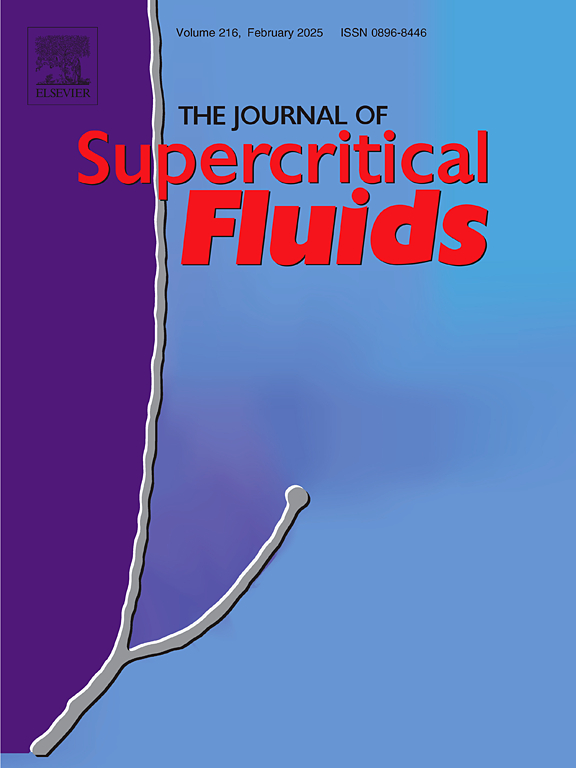SC-CO2压裂井筒中CO2流动过程分析及起裂压力预测
IF 4.4
3区 工程技术
Q2 CHEMISTRY, PHYSICAL
引用次数: 0
摘要
数值模拟了超临界CO2在整个压裂过程中的行为,研究了岩石破裂前后的加压特征和流动特征。为了实现这些目标,建立了流体对流换热与地层导热耦合的数值模型。结果表明,CO2密度的积累可以减缓摩擦压降的增长,促进增压,而较高的喷射温度不利于增压。岩石破裂后,注入温度在263.15 K以上,井底CO2可保持超临界相。井底压力的变化对CO2温度的变化影响不显著。随着井底温度的升高,岩石破裂起裂压力升高,地应力差σH/ σH由1增大到3,温度升高导致岩石起裂压力降低93 %。本文章由计算机程序翻译,如有差异,请以英文原文为准。
Analysis of flow process of CO2 in wellbore and prediction of fracture initiation pressure during SC-CO2 fracturing
Numerical simulation of the behavior of supercritical CO2 during the entire fracturing operations is performed to investigate the pressurization features and flow characteristics before and after rock breakdown. To achieve these goals, a numerical model coupling fluid convective heat transfer and conduction heat from the formation is developed. Results indicate that the accumulation of CO2 density can slow the growth of frictional pressure drop to promote pressurization, and that a higher injection temperature is not conducive to pressurization. After the rock breakdown, the injection temperature is above 263.15 K, and the CO2 at the bottomhole can maintain a supercritical phase. The change of bottomhole pressure has no significant effect on the variation of CO2 temperature. A higher bottomhole temperature can elevate the rock fracture initiation pressure, and in-situ stress difference σH/σh increases from 1 to 3, with a 93 % decrease in initiation pressure due to increased temperature.
求助全文
通过发布文献求助,成功后即可免费获取论文全文。
去求助
来源期刊

Journal of Supercritical Fluids
工程技术-工程:化工
CiteScore
7.60
自引率
10.30%
发文量
236
审稿时长
56 days
期刊介绍:
The Journal of Supercritical Fluids is an international journal devoted to the fundamental and applied aspects of supercritical fluids and processes. Its aim is to provide a focused platform for academic and industrial researchers to report their findings and to have ready access to the advances in this rapidly growing field. Its coverage is multidisciplinary and includes both basic and applied topics.
Thermodynamics and phase equilibria, reaction kinetics and rate processes, thermal and transport properties, and all topics related to processing such as separations (extraction, fractionation, purification, chromatography) nucleation and impregnation are within the scope. Accounts of specific engineering applications such as those encountered in food, fuel, natural products, minerals, pharmaceuticals and polymer industries are included. Topics related to high pressure equipment design, analytical techniques, sensors, and process control methodologies are also within the scope of the journal.
 求助内容:
求助内容: 应助结果提醒方式:
应助结果提醒方式:


